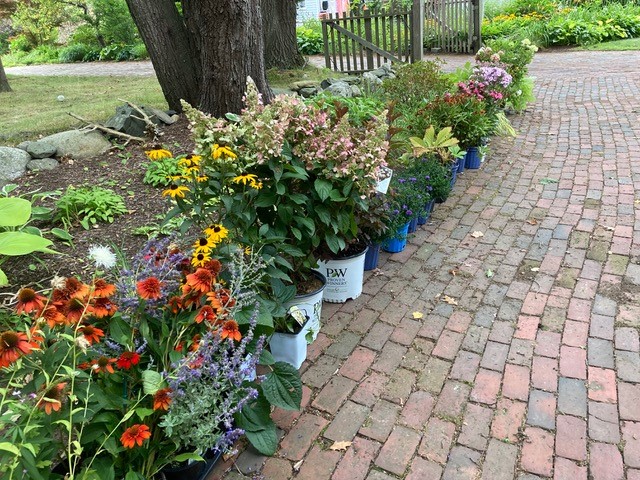It’s Labor Day weekend, your signal to go out and buy some plants – and not just the chrysanthemums that many people plant for fall color. Sure, indulge in chrysanthemums, but this year do more.
Typically, Mainers buy their garden plants before Memorial Day. We’ve been cooped up all winter, thinking about where our grounds lacked excitement the previous gardening season, and we’re eager to get back outside. So we head to the nursery, feel instantly attracted to anything in bloom, and those are the plants we buy.
That buying pattern, though, results in gardens dominated by spring-blooming shrubs and perennials. By September and October, these gardens begin to look drab. That’s a shame because in the cooler yet still comfortable months, we still have plenty of time to get outside and enjoy our gardens.
An entirely different group of plants, fall bloomers, will be on display in local plant nurseries now: Asters, echinacea (coneflower) and rudbeckia (brown-eyed-Susan) are the most common, but hibiscus, lobelia, ligularia, helenium (sneezeweed), helianthus, eupatorium, Joe Pye weed (some experts want to replace the word “weed” with the less-prejudicial “plant”), coreopsis, chelone (turtlehead), actaea (black cohosh) and late-blooming heuchera, as well as some grasses with beautiful seed heads.
Add to these, shrubs like paniculata grandiflora (PeeGee) hydrangeas and those whose leaves turn bright colors in the fall (such as blueberry bushes), and the selection is bountiful.
I’ve listed just the ones I remember from a recent nursery tour. Chances are you’ll find an even greater assortment when you visit.
Gardeners may be hesitant to buy and plant now, thinking, wait, isn’t spring the traditional planting season? Will newly planted trees, shrubs and perennials have enough time to get acclimated before the ground freezes and the snow falls?
Actually, fall can be a better time to plant than spring. While air temperatures drop, the soil temperature – which is more important for newly planted specimens – remains warm until the top crust of soil actually freezes. The warm soil allows for quick development of roots. When the spring thaw arrives, the new plants will have a head start.
Cooler air temperatures also allow new plants – and the person doing the planting – to avoid heat stress.
This next paragraph comes with an asterisk, because climate change has made it hard to predict rain cycles based on past history. But historically in autumn, Maine gets beneficial rain from the remnants of tropical storms that make landfall farther south. And even if that pattern is evolving, we can at least hope for more reliable rain than during the summer months.
Yet another advantage to planting at this time of year is that insects and weeds are less likely to bother your new plants.
That’s the science. Here are two practical reasons to plant in the fall. First, gardeners usually have more time now – at least before the leaves fall and demand to be raked. Anything you plant in your garden now equals time-savings come spring.
Second, you can often find bargains. Nurseries are eager to sell their stock and save their staff the trouble of safely storing plants and shrubs for the winter and keeping them alive until spring. With the pandemic-fueled gardening boom, however, many plant species are in short supply. During my late-August shopping trip, just one nursery had a nursery-wide sale on perennials and shrubs, while others merely offered reduced prices on specific species.
We’re native Mainers – read “thrifty” – so we took advantage of those reductions.
Tom Atwell is a freelance writer gardening in Cape Elizabeth. He can be contacted at: tomatwell@me.com.
Send questions/comments to the editors.



Comments are no longer available on this story